We always have a knife in our teeth.
–Richard Berman
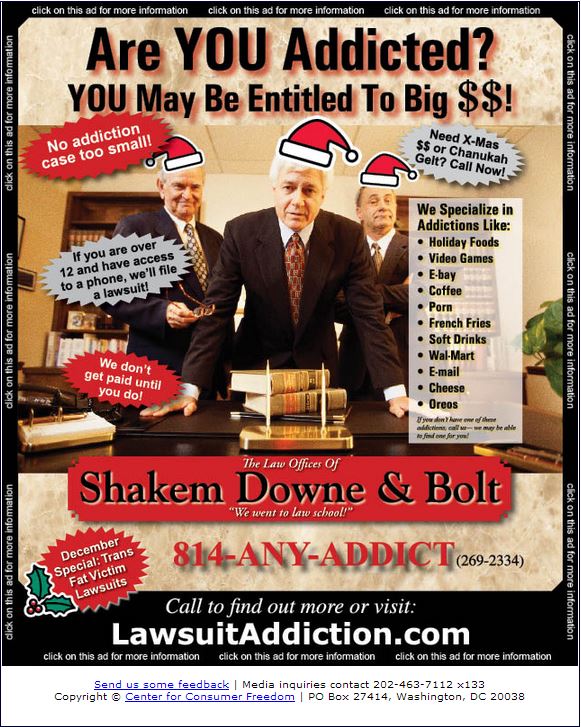
Online promotion for Center for Consumer Freedom’s failed anti-lawyer campaign, LawsuitAddiction.com.
Richard Berman despises trial lawyers, and his front groups frequently rage against “frivolous lawsuits,” “fat-cat lawyers,” and a “cabal” of attorneys.
But apparently, that loathing only applies to lawyers working for the public good.
When news came out that Berman was attempting to smear animal welfare groups through a phony “shelter advocacy” group, shelters were outraged by the deception. Berman then attempted to silence them through a campaign of legal intimidation, sending cease and desist letters to a number of shelters and animal welfare bloggers, including Washington Animal Rescue League, Humane Society of Berks County, Richmond SPCA, San Francisco SPCA, Ecorazzi, and Ohmidog.
Many of these shelters took down their comments rather than be faced with defending a meritless, but costly lawsuit.
In order to cast doubt on the victim’s words, Berman and his front groups focus on trivial errors, or even create bold misstatements of fact. In response to Time Magazine’s coverage of Berman’s underhanded tactics in which they stated that HumaneWatch.org paid for advertisements attacking the Humane Society of the United States, Berman’s attorneys objected, claiming that it was the Center for Consumer Freedom that paid for them.

HumaneWatch is an alias of the Center for Consumer Freedom. (Source: 2011 Form 990 tax return)
Despite nitpicking from Berman’s attorneys, the essence of the article is correct, just as animal shelters’ outrage over Berman’s phony shelter group was correct. Although Berman protested that “HSSP isn’t my group,” HSSP is operated by Berman and Company staff, out of Berman and Company’s offices. As with Berman’s other front groups, a significant portion of its “nonprofit” donations were funneled into Berman’s PR firm and into Berman’s pockets.
The purpose of this legal intimidation is clearly not to set the record straight, but to use Berman’s ill-gotten wealth to bully whistleblowers into silence.
In the case of Richard Berman — an attorney himself — crying crocodile tears about legal intimidation while simultaneously using it to harass animal welfare advocates is doubly offensive.
Please feel free to save these graphics to your computer, link to them directly on this site, or share on Facebook, Twitter, and Pinterest.
http://www.stophumanewatch.org/blog/intimidation
View and share previous weeks’ graphics from our Resources page.

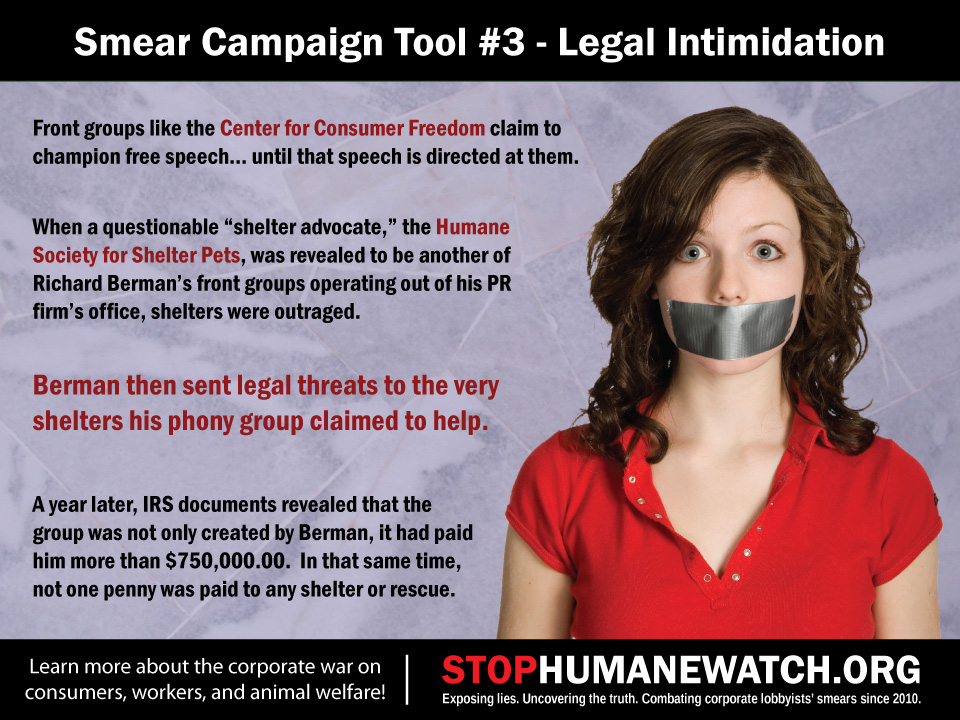




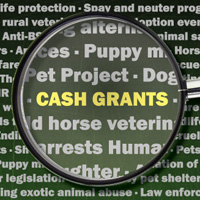
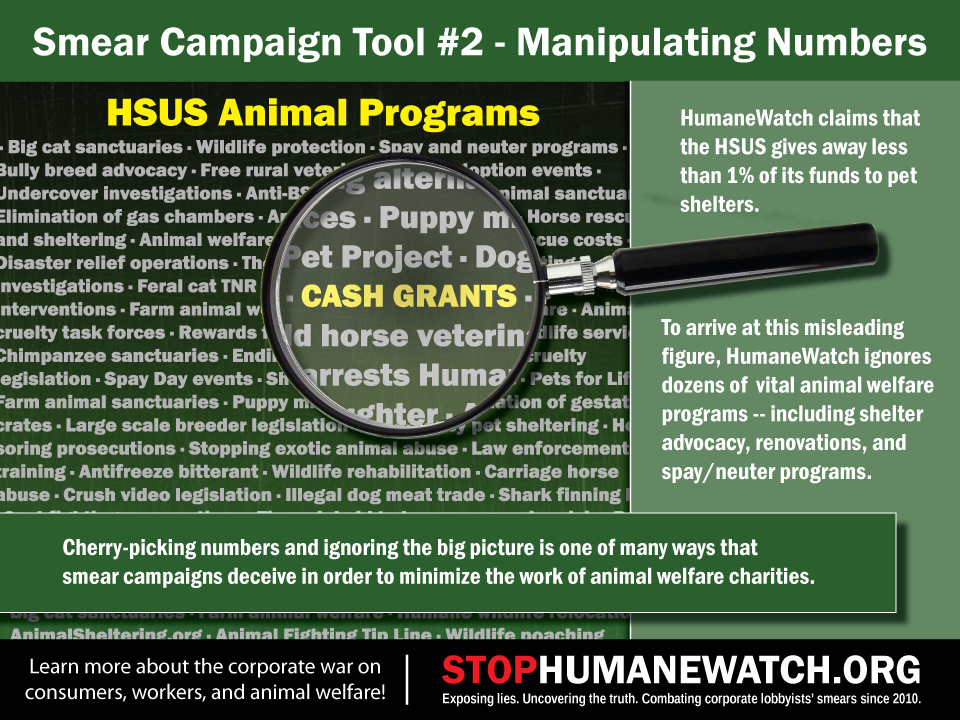
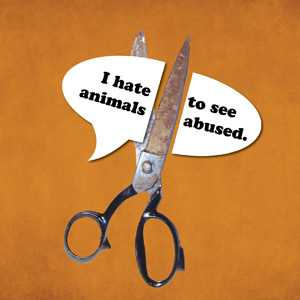
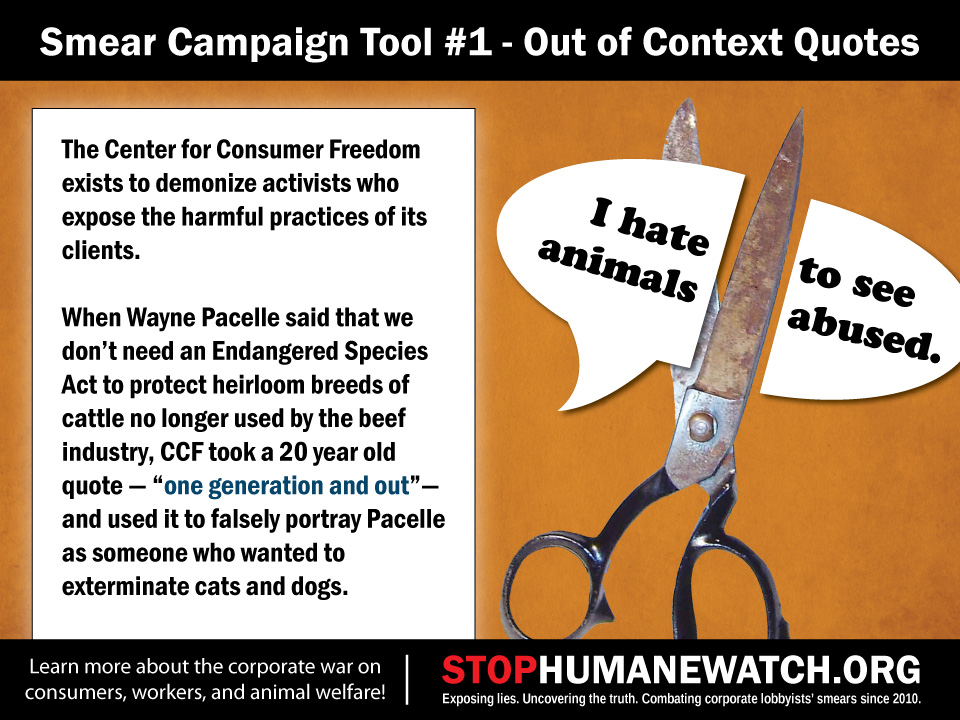
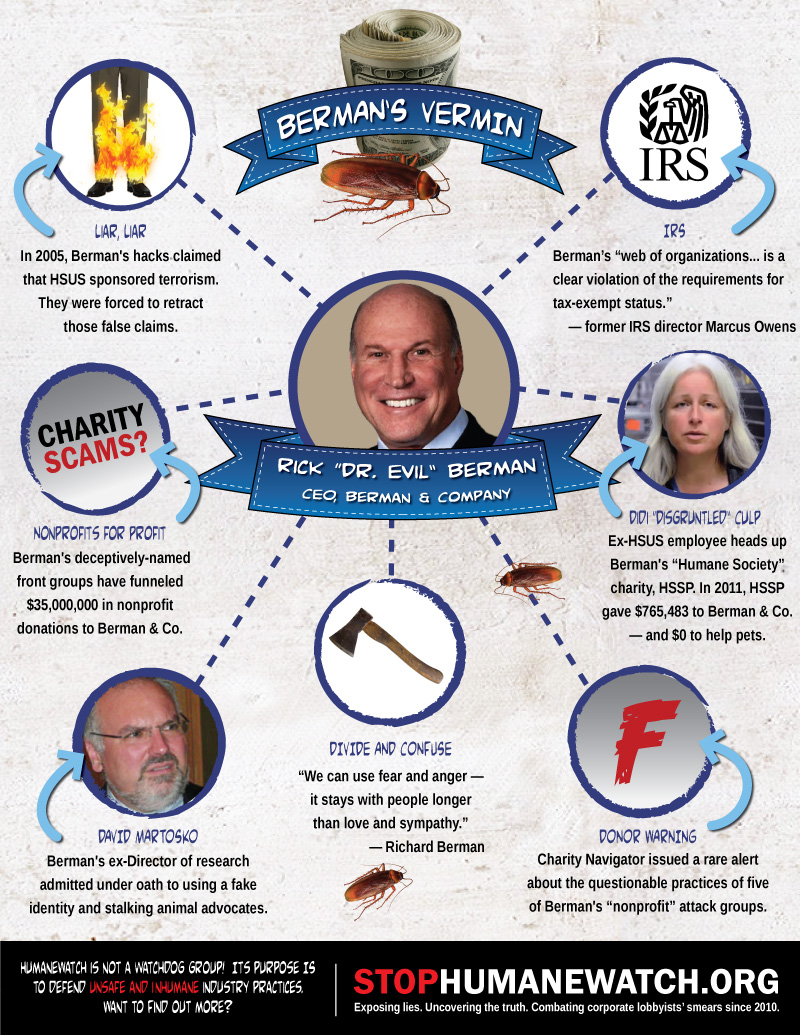
 Nonprofit regulations are intended to ensure that nonprofit organizations exist for the public benefit, and not for the enrichment of its creators.
Nonprofit regulations are intended to ensure that nonprofit organizations exist for the public benefit, and not for the enrichment of its creators.